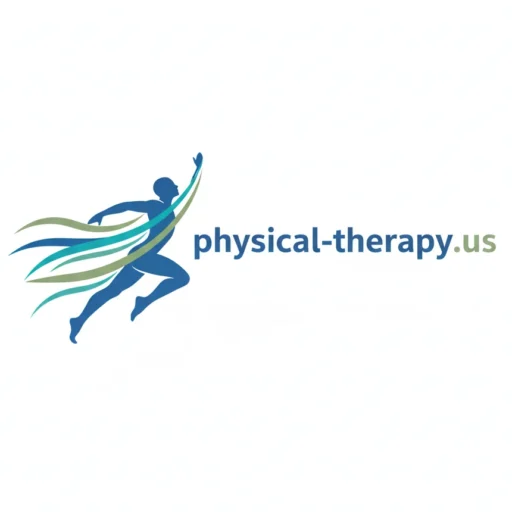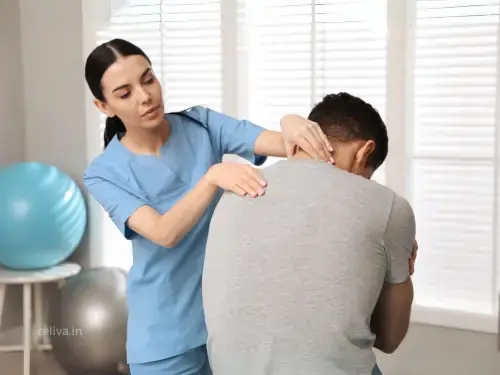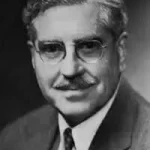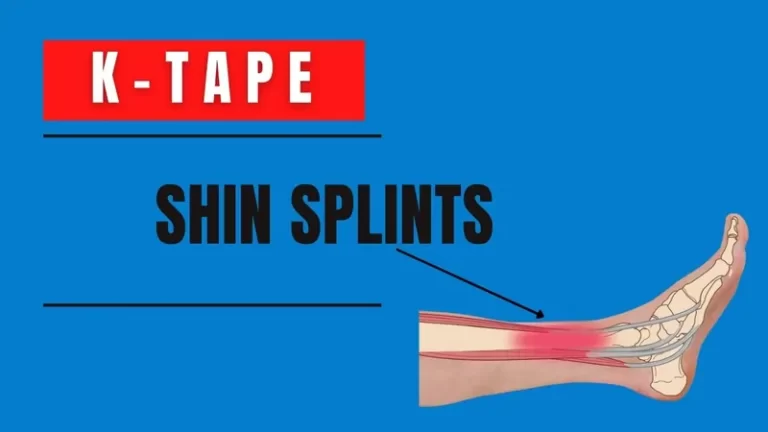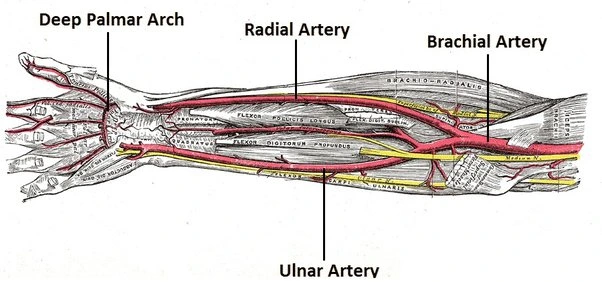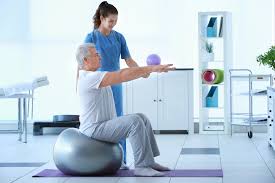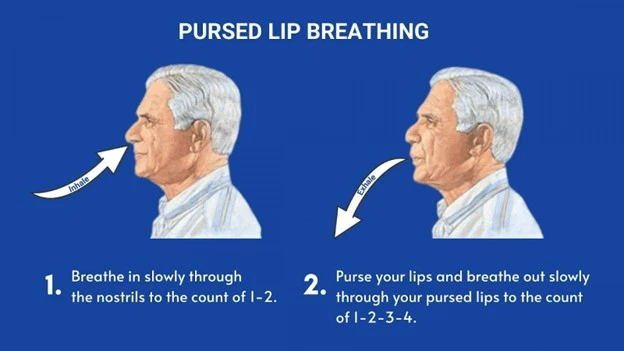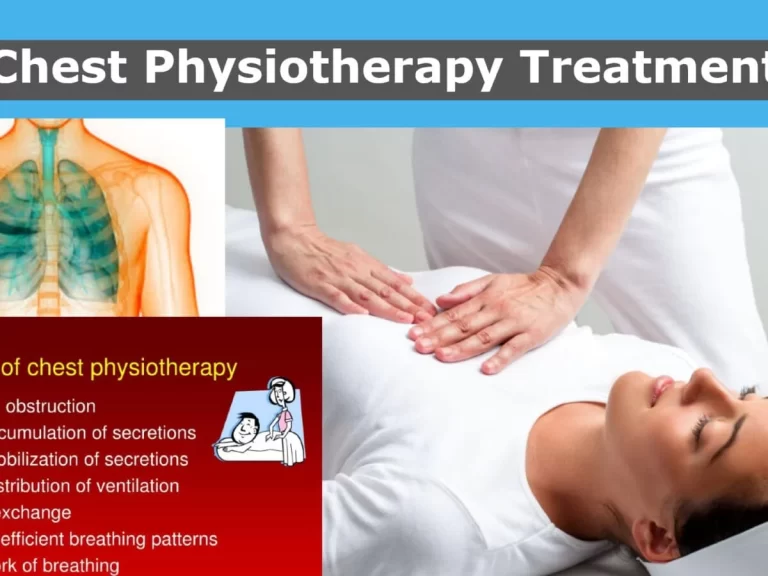Physical Therapy Exercise For Cervical Spondylosis
Introduction
The neck’s joints and discs are impacted by the frequent age-related disorder known as cervical spondylosis. If treatment is not received, this disease may result in nerve compression and other problems in addition to persistent neck pain and stiffness.
This article will describe the structure of the cervical spine, the distinction between cervical kyphosis and cervical spondylosis, and the role that physical therapy can play in treating these conditions. We will go over the top five workouts for those with cervical spondylosis.
Let’s keep this easy. The term cervical spondylosis refers to wear and strain on the neck. Some physiotherapists dislike the term “wear and tear” because they believe it is outdated. However, in actuality, everyone experiences neck wear as they age. Some people experience it starting at age 30, while others may experience it as late as age 75. This promotes tissue repair and will enable you to resume your activities.
Improvements could be gradual at first, and you might not be able to get back to your regular workout routine right away. The greatest strategy for achieving positive short- and long-term outcomes following cervical spondylosis is to gradually resume regular activities.
These exercises may be important to monitor your level of pain when working out, especially in the beginning. These exercises may first worsen your problems. They should, however, become easier with time and can aid in improving neck mobility with consistent practice.
Anatomy of the Cervical Spine
The head is supported and has a great range of motion by the seven vertebrae (C1–C7) that make up the cervical spine, which is situated in the neck. These vertebrae shield the spinal cord and are joined by discs, ligaments, and muscles. Due to their unique shape and function, the first two vertebrae, the axis (C2) and atlas (C1), allow for a great deal of head rotation. The discs that separate these vertebrae, which serve as shock absorbers and keep the neck erect, permit movement in the neck.
Epidemiology
Many people who do not show any symptoms often have indications of spondylotic alteration, with disc degeneration evident in:
- One quarter of adults under 40.
- 85 percent of persons over 60.
- At ages 65 and 60, 95% of males and 70% of women were impacted.
Causes
- Axial neck pain, cervical myelopathy, and cervical radiculopathy are the three primary clinical symptoms that cervical spondylosis manifests as, resulting from compression of the spinal cord, spinal vasculature, and nerve roots.
- A congenitally narrow vertebral canal, exposure to severe spinal trauma, cervical musculature-affecting dystonic cerebral palsy, and certain sports like rugby, soccer, and horseback riding can all accelerate the disease process and cause early-onset cervical spondylosis.
Symptoms of Cervical Spondylosis
Neck stiffness and soreness are common symptoms that may get worse with time. When moving their necks, some people may hear a cracking sound or a grinding sensation. In more severe situations, nerve compression may occur, leaving the hands, fingers, or arms feeling weak, tingly, or numb. These symptoms might affect a person’s capacity to carry out everyday tasks, which highlights how crucial early detection and treatment are.
Early action can greatly enhance outcomes, so it is imperative to address these symptoms as soon as possible. Including targeted exercises, like “physiotherapy exercises for cervical spondylosis,” can help manage these symptoms quite well. By strengthening the neck muscles, increasing flexibility, and lessening nerve compression, these exercises aim to enhance neck health and quality of life in general.
Risk factors
- Gender, age, and occupation
- About 10% of patients have cervical spondylosis as a result of deformed laminae, obstructed vertebrae, and congenital bony abnormalities that put excessive strain on nearby intervertebral discs.
Is physical therapy important for cervical spondylosis?
Osteopathy and physiotherapy are crucial for cervical spondylosis because they can aid with function and pain management without requiring intrusive procedures like surgery. Physiotherapy can also help prevent further neck deterioration by improving posture and reducing neck strain. Working with a physiotherapist can help you create a personalized treatment plan that meets your unique needs and objectives and improves your quality of life.
Benefits of Physical Therapy for Cervical Spondylosis
- Pain Relief and Inflammation Reduction: By reducing muscular tension and enhancing blood flow to the affected area, physiotherapy treatments such as manual therapy and soft tissue mobilization can lessen pain. Inflammation and stiffness can also be decreased with the use of modalities such as thermotherapy (heat therapy).
- Mobility Restoration: Cervical spondylosis can limit neck movement, which makes daily tasks challenging. By using specific stretches and exercises, physical therapy can successfully restore range of motion and flexibility. The ultimate goal of these interventions is to expand the body’s range of motion by reducing stiffness, lengthening muscles, and improving joint mobility.
- Stabilization and Strengthening: To effectively manage cervical spondylosis, strengthening exercises are essential. By focusing on the deep stabilizing muscles of the cervical spine, these workouts lessen neck tension and lower the chance of additional injuries.
- Better Positioning: Cervical spondylosis frequently affects posture, which can be improved with physiotherapy. Physical therapy can assist in maintaining healthy spinal alignment and lessen neck pain by adjusting alignment and strengthening supporting muscles.
- Decreased Disability: Through increased functional capability and easier performance of daily tasks, physical therapy can dramatically lower disability.
- Prevention of Progression and Recurrence: Physical therapy can help stop cervical spondylosis from getting worse and lessen the chance of reoccurring symptoms by strengthening the neck muscles and treating the underlying causes of the problem.
Precautions for Cervical Spondylosis During Exercise
Keep Your Neck Neutral:
Throughout your activities, make sure your neck is in a neutral posture by keeping your chin slightly tucked in rather than protruding forward. You should also refrain from slouching.
Begin gently and slowly.
- Before beginning any strengthening workouts, always start with some light stretching.
- Keep your neck muscles from being strained by sudden, jerky movements.
Keep Your Posture Correct
- When performing exercises, maintain a straight back and relaxed shoulders.
- Keep in mind that slouching might worsen neck pain.
Avoid high-impact movements.
- No hyperextensions or rapid, forceful neck rotations.
- Exercises that require you to raise large weights with your neck should be avoided.
When necessary, take breaks and rest.
- Stop and take a break if you experience weariness or worsening pain.
- More stiffness may result from overstretching the neck muscles.
Employ Appropriate Assistance
- When performing seated activities, use a chair that provides adequate lumbar support.
- For additional support, place a tiny pillow behind your neck if necessary.
Get Warm and Get Cool
- Use deep breathing and relaxation techniques to wrap up your routine.
Stay away from Head Position Forward.
- Don’t spend too much time staring down at books or screens.
Stay Hydrated
- Dehydration can worsen pain and stiffness.
Pay Attention to Your Body
- Stop a workout right away if it causes numbness, lightheadedness, or intense pain.
- A doctor or physiotherapist should be consulted before beginning a new routine.
Dos:
- Exercise is one of the most crucial things to perform if you have cervical spondylosis, since it is necessary to initiate the body’s natural healing process. Additionally, exercise helps the patient stay independent of medical support. For the patient to prevent immobility and strengthen their ligaments, muscles, and joints, they must engage in regular exercise.
- Performing these exercises regularly is one of the most crucial things to do for cervical spondylosis. It can protect against further injuries or soreness and help relax muscles.
- For patients with cervical spondylosis, a firm bed is the best option. Using a hard mattress and a small pillow to sleep on the floor is the best option. Another important recommendation that patients with cervical spondylosis should follow is this one. Make sure your bed is warm before you go to bed if you have back pain.
- Stop watching TV or using the computer frequently to take quick walks, especially if you’re feeling stressed. To prevent neck pain, one of the most crucial things to keep in mind if you have cervical spondylosis is to take frequent breaks from work and to avoid sitting still for extended periods of time.
- If your neck hurts, immobilize it, take some rest, and take the prescribed painkillers. Another important consideration if you have cervical spondylosis is that sleeping during the acute phase may speed up your recovery and stop the issue from getting worse.
- On the other hand, when immobilization is necessary, the cervical collar should only be worn for a short while.
- Spondylosis patients should use appropriate safety gear to protect their necks when playing, traveling, adventure sports, or doing other everyday activities. Buckle up when driving or riding in a car to prevent accidents and jerks.
Don’ts:
- People with spondylosis should refrain from abrupt motions, such as neck or body twists. This is one of the most important things to avoid when dealing with cervical spondylosis, since it can lead to more damage to the muscles and joints. Moderate movements are better because they give the body time to adapt to the change.
- For cervical spondylosis, another common no-no is to avoid rotating to one side when getting out of a prone posture. This may cause excessive neck strain, which would make the ache worse.
- Although it’s better to sleep with a thin pillow or without one, placing cushions under the neck or shoulder can be bad for the neck. Therefore, using thick cushions or stacking pillows is one of the things that people with cervical spondylosis should avoid.
- Among the most important dos and don’ts is avoiding bad postures, such as reading while lying down or sitting for extended periods of time at a desk.
- Heavy lifting, high-impact exercises, and carrying a phone on one shoulder and relying on it for extended periods of time are some of the strict no-nos for cervical spondylosis.
Physical Exercises
Stretching Exercises
Neck Flexion (Chin to Chest)
 Neck flexion
Neck flexion
- Lower your chin slowly toward your chest until the back of your neck begins to gently expand.
- For ten seconds, maintain this posture.
- Return to the starting position gradually.
- Five to ten times, repeat.
Benefit: Reduces stiffness and relieves tension by stretching the muscles at the back of the neck.
Neck Extension (Look Up)
 Neck Extension (Look Up)
Neck Extension (Look Up)
- Raise your head and tilt it back. As much as it is painful, keep your chin up. For five breaths, hold the stretch.
- For ten seconds, maintain this posture.
- Slowly return to the beginning position.
Benefit: Improves mobility through stretching the front of the neck and strengthening the supporting muscles.
Neck Side Tilt (Ear to Shoulder)
 Side-to-side neck tilts
Side-to-side neck tilts
- Slowly tilting your head to one side.
- Maintain a comfortable posture.
- After ten seconds of holding, switch sides.
- On each side, repeat five times.
Neck Rotation
 Neck Rotation
Neck Rotation
- Slowly tilt your head to one side as far as it feels comfortable while sitting up straight.
- For ten seconds, maintain this posture.
- Five times on each side, repeat.
Upper Trapezius Stretch
 Upper-trapezius-stretch
Upper-trapezius-stretch
- Holding onto the seat with one hand, sit in a chair.
- Tilting your head in the other direction.
- Holding for 10 seconds will cause your neck and upper shoulder to extend.
- Repeat after switching sides.
Benefit: Lessens shoulder and neck pain by releasing tension in the upper trapezius muscles.
Soothing Neck Stretches
 Neck stretch
Neck stretch
Neck muscles can be stretched and relaxed with the help of soothing neck stretches, a mild cervical spondylosis exercise. The purpose of soothing neck stretches is to gently stretch and relax the neck muscles. To carry out:
- Bring your ear close to your shoulder by slowly tilting your head to one side until you feel a slight strain.
Muscle relaxation and recovery require gentle stretching. Additionally, it improves flexibility, eases neck strain, and promotes blood circulation.
Isometric Neck Exercises
 Isometric Neck Exercises
Isometric Neck Exercises
To carry out:
- Press your palm into your hand and lay it on your forehead without allowing your head to fall forward.
- Hold this pressure for five to ten seconds, then let go.
The neck’s stability is enhanced by these activities. For people with cervical spondylosis, they are especially beneficial since they strengthen the muscles surrounding the neck without putting undue tension on them. Frequent practice can make your neck stronger and more stable, which lowers your risk of pain.
Pillow Press Head Lifts
 Head Lifts
Head Lifts
One of the most important physiotherapy exercises for cervical spondylosis is the pillow press head lift, which increases neck muscle endurance. To perform Pillow Press Head lifts, place a pillow beneath your head for support while lying flat on your back on a mat. Maintaining a straight line from your neck through your spine, carefully raise your head off the pillow while keeping your chin tucked in. Before lowering your head softly into the cushion, hold this position for a short while. Aim for five to ten reps.
By strengthening the deep cervical flexor muscles, this exercise helps to stabilize the neck and lower the chance of strain during regular tasks. Frequent practice helps enhance general spinal health and neck stability.
Shoulder Wave Circles
 Shoulder Wave Circles
Shoulder Wave Circles
An essential cervical spondylosis exercise that eases neck and shoulder stress is the Shoulder Wave Circle. Start by standing or sitting up straight to perform Shoulder Wave Circles. Start with a gentle circle of shoulder movements that go up, down, backward, and forward. Use your shoulders to create “waves” as you do this fluently. Aim for ten circles, then do the opposite for ten more.
Tension in the neck and shoulders can be relieved with this exercise. The shoulders’ circular motion relieves tension and stiffness by relaxing the muscles surrounding the neck and upper back. These areas can become more flexible with regular practice, which will benefit the health of your neck as a whole.
Strengthening Exercises
Chin Tucks
 Chin-tuck
Chin-tuck
- Stand or sit upright.
- A chin tuck is a basic exercise to strengthen and improve neck posture that involves pulling the chin backward, as if making a double chin. It is frequently advised for people who have neck pain and a forward head position (FHP).
- After five seconds of holding, let go.
- Do this ten times.
Wall Angels
 Wall Angels
Wall Angels
- Your feet should be roughly 6 to 8 inches (15 to 20 cm) from the wall.
- Pull your belly button in the direction of your spine to try to start with a neutral one. With your lower back slightly off the wall, draw your ribs in and down until you feel the back of your rib cage attach to the wall. A tiny pillow behind your head could help if you have trouble getting your head against the wall.
- Reach your arms straight up and place them on the wall above it, making sure that the backs of your hands make a “V” shape with the wall. If you experience any problems with this alignment, try moving your feet farther away from the wall to see if it fixes the problem.
- Then bend your elbows and lower your hands down the wall until they hang just above your shoulders. Keep your head, trunk, and butt against the wall in the while.
- Lower just as low as you can without causing pain and with proper posture (it’s acceptable to feel a stretch). Hold for five counts at the lowest point, then, while staying aligned, return to the “V” starting position.
Mobility & Postural Exercises
Shoulder Rolls
 Shoulder Rolls
Shoulder Rolls
- Stand or sit upright.
- Ten times, roll your shoulders forward in a circle.
- Next, roll them back ten times.
Benefits: Lowering neck and shoulder stiffness, increasing blood circulation, and relieving tension.
Scapular Squeeze
 Scapular retraction
Scapular retraction
- Stand or sit upright.
- As though you were trying to grasp a pencil between your shoulder blades, squeeze them together.
- After five seconds of holding, let go.
- Do this ten times.
Thoracic Extension
 Thoracic extension
Thoracic extension
- While maintaining a stable lower back, slightly arch your upper back.
- After ten seconds of holding, switch back to neutral.
- Five to ten times, repeat.
Seated Cat-Cow Stretch
 Seated Cat-Cow Stretch
Seated Cat-Cow Stretch
- Touch the thighs with the hands.
- Repeat gently.
- Do five repetitions.
Benefit: Reduces tension in the neck and upper back and increases spinal mobility.
Neck Yoga (Gentle Cat-Cow for Neck)
- Maintain a straight spine when sitting comfortably.
- Gently tilt your head back in a steady, deliberate motion after lowering your chin to your chest.
- Do ten slow repetitions.
Benefit: Promotes relaxation, lessens stiffness, and increases neck flexibility.
Conclusion
There are several symptoms associated with cervical spondylosis. Both the prognosis and the symptoms may be uncertain. Self-care techniques and lifestyle modifications can help many people manage their symptoms and keep their arthritis from getting worse.
Even though cervical spondylosis is a prevalent ailment, it doesn’t have to rule your life. Your neck muscles can be strengthened, your flexibility increased, and your pain effectively reduced by implementing a well-organized exercise program that incorporates mobility, strengthening, and stretching activities. In addition to improving posture, regular practice stops further deterioration, keeping you pain-free and active.
Proper technique and consistency are essential for long-term relief. These workouts can make a big difference, but it’s crucial to pay attention to your body, not push yourself too hard, and take the right precautions to minimize strain. If any movement is more uncomfortable than simple stretching, it’s advisable to adjust it or consult a healthcare provider.
By incorporating these exercises into your everyday routine, you’re actively working toward increased mobility, greater neck health, and a higher standard of living. To achieve a stronger, healthier neck, keep moving, pay attention to your posture.
FAQs
For people with cervical spondylosis, which exercises are best?
Cervical spondylosis is most effectively managed with mild neck stretches, strengthening exercises (shoulder blade squeezes, neck tilts, and retractions), and aerobic activities (walking). Strengthening the neck muscles, reducing pain, and improving neck mobility are the objectives of these workouts.
What is the best treatment for cervical spondylosis?
A mix of conservative measures, such as physical therapy, pain management techniques, and lifestyle changes, is the most effective treatment for cervical spondylosis. Exercises to stretch and strengthen neck muscles, enhance posture, and lessen pain are the main goals of physical therapy. Heat or cold therapy, prescription or over-the-counter drugs, and maybe injections for extreme pain are all possible methods of managing pain. Lifestyle changes, such as controlling weight, avoiding neck-straining activities, and keeping proper posture, can also be very important in managing symptoms.
What kind of juice helps with back pain?
Because of their anti-inflammatory and pain-relieving qualities, a number of fruit and vegetable juices can help reduce back pain. Beet juice, pineapple juice, and cherry juice are frequently mentioned as healthy. Juices prepared from turmeric, ginger, and leafy greens can also lessen back pain.
Does walking help those with cervical spondylosis?
Walking can be helpful for those with cervical spondylosis, yes. It is a low-impact exercise that can help preserve the mobility of the neck and spine, enhance general fitness, and possibly lessen condition-related pain. Starting cautiously and paying attention to your body is crucial, though, particularly if you’re in pain.
How should someone with cervical spondylosis sit?
Taking regular breaks, practicing mild exercises, and maintaining proper posture are the key to managing cervical spondylosis when seated. Aim for a straight back, relaxed shoulders, and a head that is in line with your spine—avoid forward head position.
Which cervical spondylosis symptoms are the worst?
Some of the most severe symptoms of cervical spondylosis include loss of bladder or bowel control, difficulties walking or maintaining balance, and extreme muscle weakness. Serious compression of the spinal cord or nerves is often indicated by these symptoms. Although stiffness and neck pain are typical, more severe symptoms can have a major negative influence on a person’s quality of life.
What is the greatest massage for neck pain?
A Swedish massage is perhaps the best type of massage therapy for people who have persistent neck and shoulder pain. Long, light strokes are used in Swedish massages to lengthen the muscles, which helps to ease stress and increase blood flow.
Reference
- NHS Inform. (2025, February 6). Exercises to help with cervical spondylosis | NHS Inform. NHS Inform. https://www.nhsinform.scot/illnesses-and-conditions/muscle-bone-and-joints/neck-and-back-problems-and-conditions/exercises-for-cervical-spondylosis
- Physio, S. (n.d.). Best 5 Exercises for Cervical spondylosis – Surrey Physio. Surrey Physio. https://www.surreyphysio.co.uk/top-5/best-5-exercises-for-cervical-spondylosis/
- Felman, A. (2023, March 3). What to know about cervical spondylosis. https://www.medicalnewstoday.com/articles/172015#summary
- We Are Spine. (2025, May 28). 15 Cervical spondylosis exercises to relieve neck pain. https://wearespine.in/cervical-spondylosis-exercises/
- Editorial Team. (2023a, November 22). Top 7 Best exercises for Cervical spondylosis to reduce pain. Heritage Hospitals. https://heritagehospitals.com/blog/exercises-for-cervical-spondylosis/.
- Anssi. (2024, November 30). Cervical spondylosis treatment: The Best 5 exercises to improve your condition. ANSSI Wellness. https://www.anssiwellness.com/cervical-spondylosis-treatment-best-5-exercises-to-improve-your-condition/.
- Make an instant appointment for the best treatment of cervical spondylosis in India | Dr. Arun Saroha. (n.d.). https://drarunsaroha.com/blog/?qb-b=dos-and-donts-of-cervical-spondylosis
